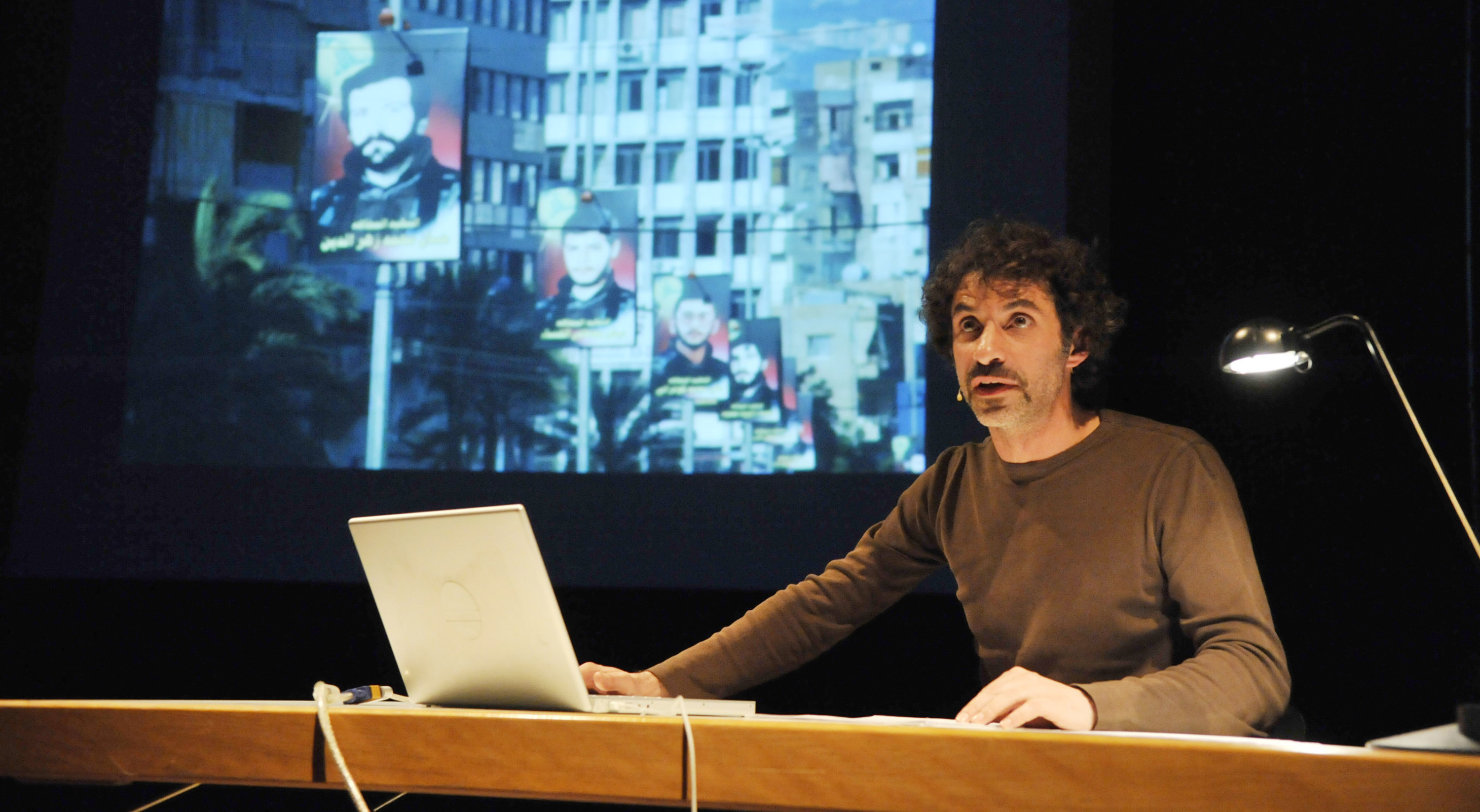Rabih Mroué
The Inhabitants of Images
septembersept 21
Saturday september 21
19h
A non-academic lecture by Rabih Mroué. Translation in English Ziad Nawfal. Translation in French Jean-Luc Defromont.
Coproduction Tanzquartier Wien GmbH ; Bidoun ; The Lebanese Association for Plastic Arts, Ashkal Alwan (Beirut)
In partnership with L'Orient Le Jour
Lafayette Anticipations and the Festival d'Automne à Paris present this programme in co-realisation.
As part of Lafayette Anticipations' Échelle Humaine festival, organised with the Calouste Gulbenkian Foundation - Delegation in France.
Rabih Mroué's objective with his “non-academic conferences” is to subvert, via the perspective of performance, the principle of the conference. He does so by imitating the mechanisms at work within the conference format. He does not set out to make fun of the principle of the conference itself, but rather to exploit the power of the exercise as a form of public address. This is achieved by operating a shift of a voluntarily ambiguous nature, passing from presentation to representation and from reality to the imagination. The illusion it sets up is a disturbing one: the tone is neutral, the expertise seems well proven, and the documents supporting the speech suggest authenticity. This, of course, is precisely the aim of the whole mischievous, moving and intellectually stimulating operation.
In The Inhabitants of Images (2008), Rabih Mroué comments on images and, in the process, dissects the mixture of politics, fiction and reality that characterises political discourse in Lebanon. On the one hand, the supposedly impossible meeting between Gamal Abdel Nasser and Rafik Hariri, two deceased political leaders, and on the other, the photos of Hezbollah ‘martyrs’ displayed in the streets of Beirut, provide the speaker with material for developing observations whose implausibility in no way detracts from their relevance.


